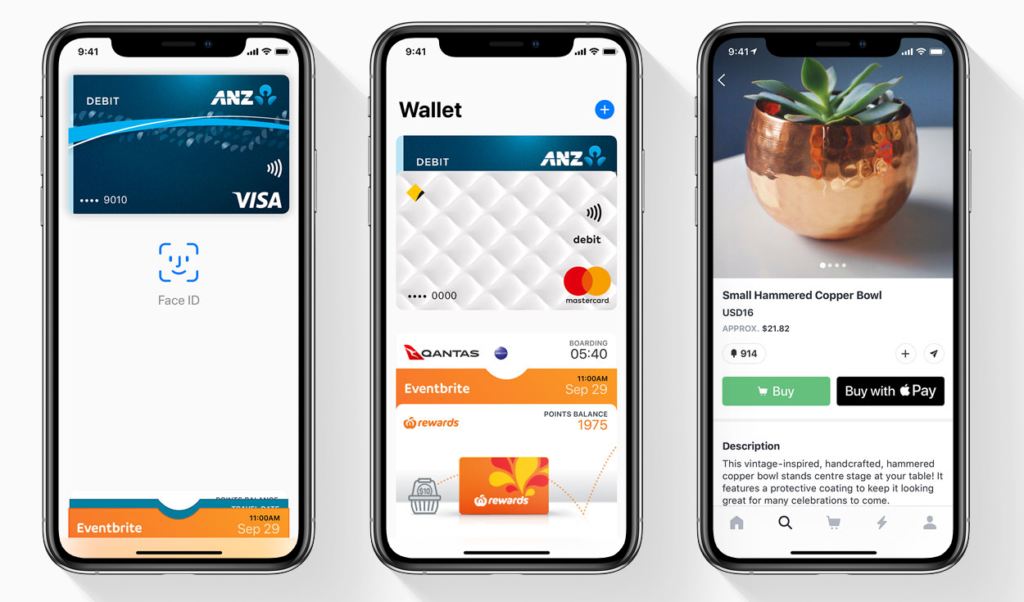
Remember travelling out of town to find a gift because the local stores didn’t have it? Or putting in a mail order from a magazine?
It’s amazing to think just three decades ago, online orders weren’t even a thing. No online shopping. No ecommerce. No Afterpay, Paypal, Zippay, or Apple Pay.
You’d have to make a trek and a half just to get a cashmere jumper from David Jones.
Shopping has become an instantaneous process in 2019. Customers can find a bizarre, unique, one-of-a-kind product at the touch of a smartphone screen. Shipping is often free and express, plus up-front payments are no longer a necessity.
It’s now easier than ever to find and purchase products online… all thanks to ever-advancing ecommerce technologies.
So what’s next for ecommerce?
Buckle up, ecommerce fans. In this blog, we’re highlighting the top three ecommerce innovations to look out for in the future.
#1. AI personalisation
According to a recent report on personalisation in the ecommerce sector, 22% of shoppers are satisfied with the level of personalisation they receive while shopping online… Which means simple name-dropping in an automated email just doesn’t cut it for the modern shopper.
In fact, just 8% of respondents would be inclined to checkout if the brand addressed them via their first name.
Customers want to be treated as an individual – not part of a generalised, faceless mass. In 2019, brands and ecommerce stores need to provide a high level of personalisation.
Google Shopping and Google Ads are making massive leaps to make their advertising more personalised. For example, with dynamic remarketing campaigns in Google Ads, ecommerce businesses are able to target customers who have visited their website and perhaps not checked out, then show them specific products the customer showed interest in.
These ads can be generated based on the customer’s personal interests, demographics and prior internet browsing history. Ads can appear in the right place at the right time and on the right platform, encouraging the customer to return to the store and check out.
Google’s AI and sister technologies like machine learning are going to be integral to its business growth moving forward. From ad text generation to conversion recommendations, it might be time to get on the Google train.
#2. New payment services
If there’s one thing shoppers love, it’s fast, convenient and secure online shopping.
In fact, Australians love it so much it’s becoming a bit of a problem.
According to the Australian Securities and Investments Commission (ASIC), more than two million people in Australia are using “buy now, pay later” services like Afterpay & Zippay. As of June 2018, Aussies owed more than $900 million to these services!
“Buy now, pay later” services have become popular with lower earning customers, in particular. Around 44% of customers who use them earn below $40,000 per year, but Afterpay & Zippay allow them to make purchases they may not have been able to in the past, especially so around the holiday season.
“Buy now, pay later” makes shopping far more convenient and accessible… But what about customers who want shopping to be fast?
Apple Pay & Google Pay are becoming increasingly popular for shoppers who want to ditch their cards and lighten their wallets. Customers can now link their banks and credit cards to an app on their phone – when shopping online, customers can make secure purchases in a single tap, complete with face recognition and fingerprint confirmations.

Image: Apple Pay

Image: Apple Pay
In the modern marketplace, customers should be able to make a purchase within seconds. Our partners at Magento, Woocommerce & Shopify all have one-click checkout capabilities – check out the links below and speed up the shopping process for your customers:
#3. Voice shopping
In 2020, 50% of all searches will be voice searches.
Spooky.
Most people have asked their Google Home or Alexa about the weather or to blast some tunes – in fact, 30% of people around the world have used or at least own a voice assistant. However, voice assistants are capable of so much more than trivial questions and speaker functions.
Tech brands like Google & Amazon are teaming up with ecommerce businesses to make shopping more streamlined and sensitive to voice requests. For example, Walmart in the U.S. teamed up with Google Assistant to give shoppers access to more than two million products on voice search.
Working towards voice-activated shopping will be essential in the future – because it’s becoming popular in 2019.
62% of voice assistant owners have made a purchase via voice commerce and 12% have asked their assistant to add an item to a cart, intending to purchase something later.
Here are some top tips for optimising your ecommerce website for voice shopping in the future:
- Ensure product descriptions are comprehensive but simple to read.
- Use the most commonly used terminology – your products will be found based on how the reader describes the product, not how you do, and voice assistants aren’t sophisticated enough to cover all wordings and inflections… yet!
- Consider word choices and combinations. How things are written and how things are said are often different. Consider being informal and conversational.
- Ensure payment portals are reputable and trustworthy. While voice assistant manufacturers consider security a top priority, you want to reassure your customers that their data is secure.
- Make sure to add voice assistant and voice shopping details to your privacy policy. This ensures you’re protected as a business and customers are aware of their rights.
Meet your customer’s modern expectations with shipping that travels at lightspeed
So, we’ve got artificial intelligence, new payment services, and voice shopping to look forward to.
These technologies are advancing in leaps and bounds, so it’s important to keep up to date and start experimenting to ensure you’re providing the most streamlined, convenient shopping experience for your customers.
Since online shopping is becoming faster and easier, it’s crucial to ensure you’re offering fast, affordable shipping. Our couriers offer some of the fastest shipping times available in Australia – from international express to overnight shipping, Transdirect offers the best couriers for lightspeed shipping all over the world.